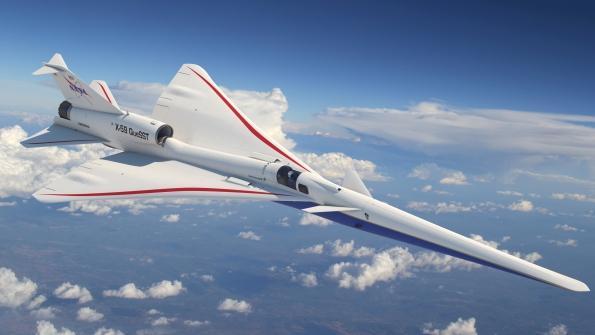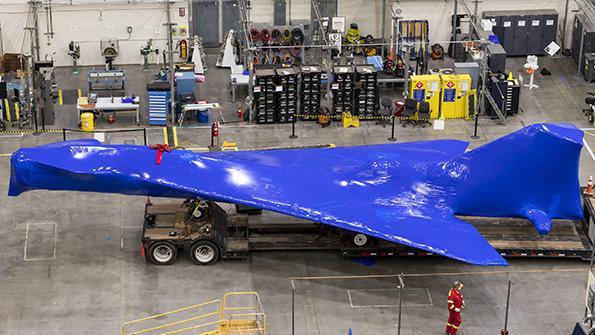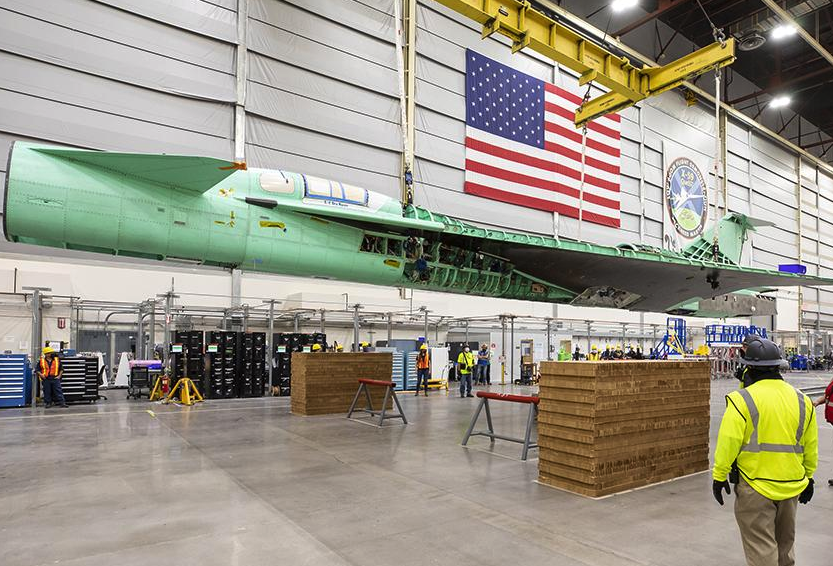
Lockheed To Build NASA’s Low-Boom Supersonic X-Plane (April 04, 2018)

NASA Lays Out Plans for Low-Boom X-59 (The Week In Technology, July 2-6, 2018)

NASA To Use X-59A QueSST Demonstrator To Seek Acceptance Of Low Booms (July 20, 2018)

Lockheed Cuts Metal on NASA’s Low-Boom X-59 (The Week In Technology, Nov. 26-30, 2018)
Lockheed Martin’s Skunk Works has cut metal on the X-59 QueSST, beginning manufacture of the first part for NASA’s low-boom flight demonstrator. The single-seat, single-engine experimental aircraft is scheduled to fly in 2021. The X-59 is being built to collect community response data on the public acceptability of reduced sonic booms. The data will be used by U.S. and international authorities to determine whether a boom standard can be set that will enable lifting of the prohibition on civil supersonic flight over land. X-59 QueSST is scheduled to conduct envelope-expansion flight testing at the NASA Armstrong Flight Research Center beginning in 2021. Read the full story. Credit: NASA

Collins To Supply Flight Deck For NASA’s Low-Boom X-59 (January 17, 2019)

NASA’s External Vision System Is Ready For Low-Boom Supersonic X-59 (June 18, 2019)

Lockheed Martin Begins Assembly Of X-59 Low-Boom Demonstrator (June 18, 2019)

Pilots To Get Used To Not Having A Forward Window - Use Displays Instead (June 18, 2019)

Buildup Of First Composite Skin Panels Began On The Skunk Works’ Large Fiber-Placement Machines (June 18, 2019)

Visibilty Is Essential (September 23, 2019)

XVS Comprises A 4k-resolution Color Camera Mounted On X-59’s Nose (September 23, 2019)

XVS Head-Up-Display Image Superimposed On Pilot’s View Through Electronic Forward-Facing Window (September 23, 2019)

Pilots Evaluating NASA’s External Vision System For X-59 (August 28, 2019)

NASA Tests Techniques For X-59 Low-Boom Flights (May 26, 2021)

X-59A Makes Progress, Faces Challenges, NASA IG Says (May 12, 2020)
General Electric has shipped the first F414-100 engine to Lockheed Martin Skunk Works to power NASA’s X-59A QueSST low-boom supersonic flight demonstrator as an audit says the project is making progress but faces cost and schedule challenges. NASA’s X-59 will gather data on community responses to reduced sonic booms.
Credit: Lockheed Martin

X-59 Structural Trials Will Pave Way For Upcoming Flight Tests (January 21, 2022)

Structural Proof Tests Of The X-59 Low-Boom Supersonic Demonstrator At Fort Worth Facility (January 21, 2022)
The X-59 is in its first stage of development with test flights planned to begin this year. If the flight test phase is successful, NASA is scheduled to take delivery of the aircraft from Lockheed Martin in 2023. This gallery highlights concept images, a flight deck configuration, and its structural phase at the Fort Worth Facility.
Comments